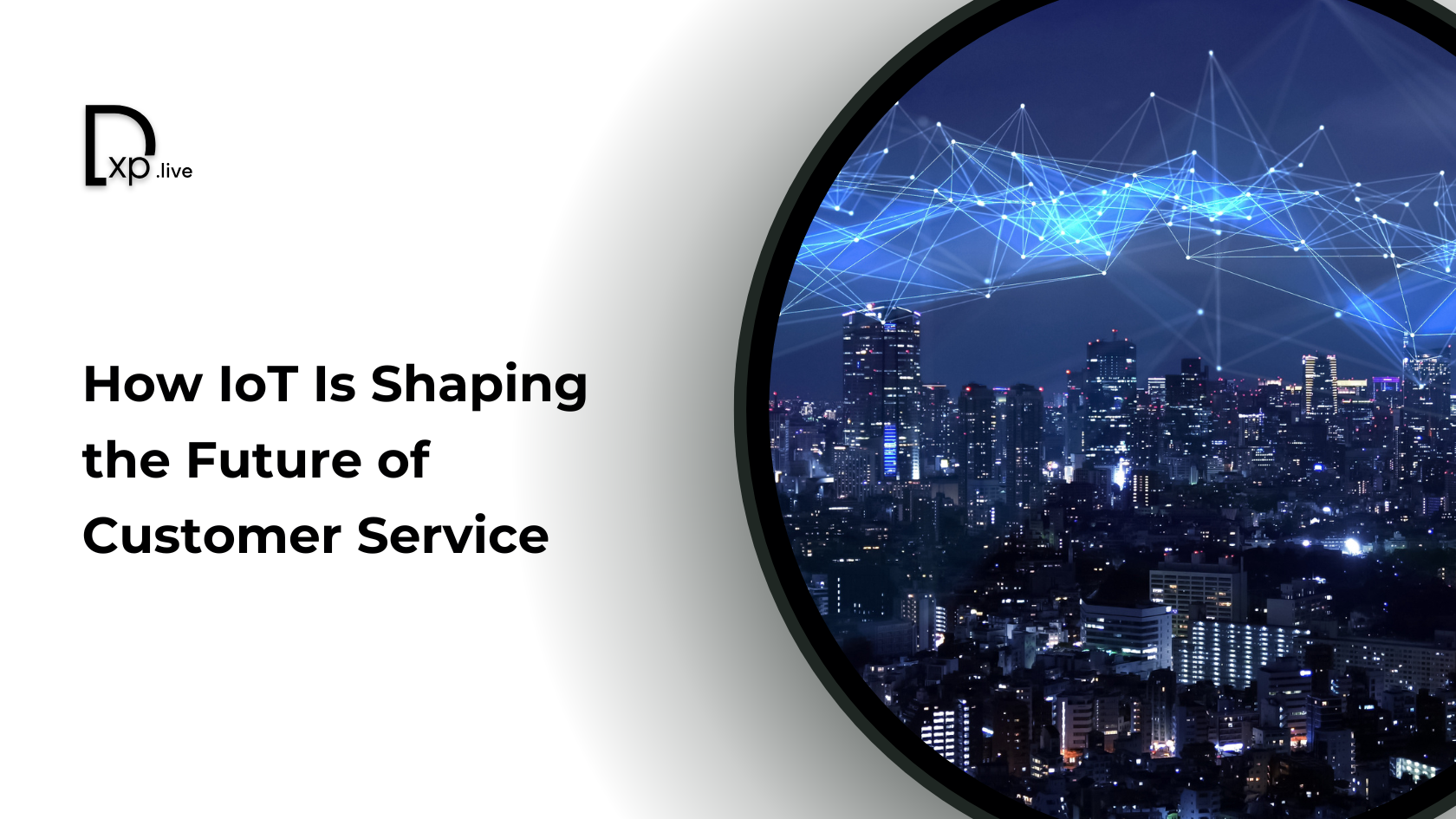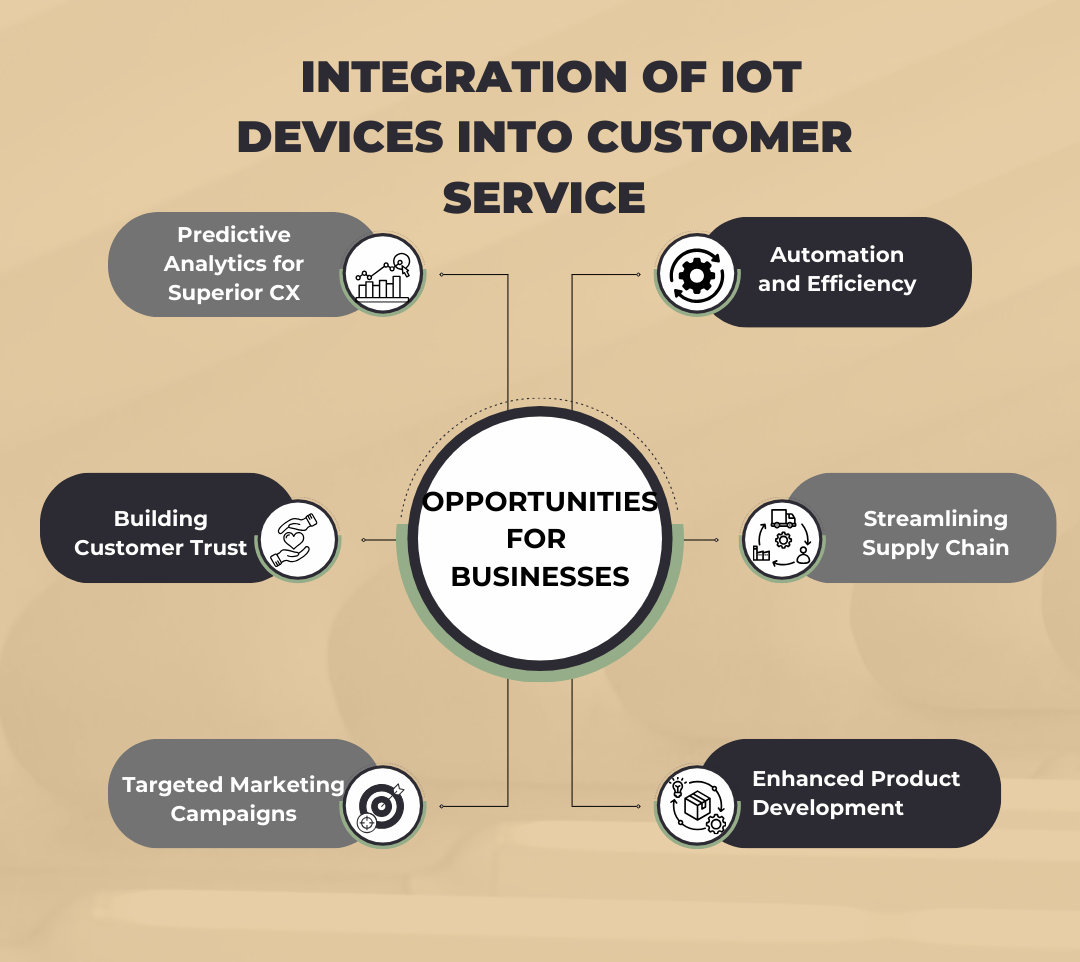How IoT Is Shaping the Future of Customer Service

The Internet of Things (IoT) is transforming how businesses engage with customers, creating opportunities for enhanced personalization, real-time insights, and seamless support. As of 2023, 61% of people worldwide owned at least one smart device, a figure expected to grow as IoT adoption accelerates. By 2030, the number of IoT devices is projected to surpass 32.1 billion, fundamentally reshaping customer service dynamics.
With connected devices generating vast amounts of actionable data, businesses must prepare to meet the needs of both human customers and a growing population of “digital customers”—autonomous devices acting on behalf of consumers. Gartner predicts that by 2026, one in five customer service requests will originate from these digital entities, marking a new era in customer experience (CX).
This blog explores the transformative potential of IoT in customer service, highlighting use cases, challenges, and opportunities for businesses looking to adapt to this connected future.
What IoT Means for Customer Service
IoT devices are fundamentally changing how organizations interact with customers by enabling more personalized, efficient, and proactive support. By collecting real-time data, these devices offer unparalleled insights into customer behavior, preferences, and needs.
1. Real-Time Data for Proactive Support
IoT devices like smart meters and wearables provide businesses with continuous streams of real-time data. This allows for predictive support, such as identifying potential issues before they escalate or tailoring services based on user behavior. For instance, a smart meter can detect energy usage anomalies and alert customers about potential issues, reducing service disruptions and enhancing satisfaction.
2. Enhanced Personalization
IoT-driven insights allow businesses to offer highly personalized services. Fitness trackers, for example, collect data on user activity and health metrics, enabling brands to recommend tailored products, services, or promotions. Personalized interactions foster customer loyalty and create memorable experiences.
3. Digital Customers as Service Partners
Digital customers, or machine customers, are IoT devices that autonomously interact with brands. Examples include connected refrigerators ordering groceries or car insurance devices adjusting premiums based on driving behavior. These interactions reduce friction in the customer journey, enabling seamless, automated experiences.
IoT Use Cases in Customer Service
IoT is transforming customer service through innovative applications that provide real-time insights, enhance personalization, and streamline support processes.
Fitness Trackers: Health and Wellness
Wearable fitness devices, such as Fitbits and smartwatches, have become essential for tracking and monitoring health. These track heart rate, sleep patterns, and physical activity, providing us with useful information on behalf of the owner to their service providers.
For example, users can share their data with healthcare providers for remote monitoring, enabling early detection of potential health issues. Brands can also use this data to deliver personalized promotions, such as discounts on fitness gear or tailored workout plans, enhancing customer engagement.
Smart Meters: Transforming Utilities Management
Smart meters represent a sea change in utility management. They provide precise real-time billing information to customers and customer participation in energy-saving programs such as discounted rates during non-peak hours is paramount.
For utility providers, smart meters offer invaluable insights into energy consumption patterns, helping predict demand and optimize supply. Outages can be detected instantly, allowing providers to proactively communicate with customers and streamline repair efforts.
Insurance Monitoring: Redefining Risk Assessment
IoT devices, like telematics "black boxes" in cars, are recalibrating the insurance industry by providing data-based risk assessment. These devices monitor driving behaviors such as speed limit, braking, and seat belt usage, which transpires into individual risk.
This approach replaces traditional stereotyping based on age or gender with personalized premiums, rewarding safe drivers with lower rates. For younger drivers, who often face higher premiums, this technology levels the playing field, offering fairer pricing and building trust.
Challenges in IoT-Driven Customer Service
Despite its potential, IoT integration into customer service is not without challenges:
Data Privacy Concerns
Vast data collection by the IoT opens very difficult questions about privacy and security, organizations need to comply with data protection regulations like the GDPR and enforce robust policies ensuring transparent use of data.
Interoperability Issues
With the massive variety of IoT devices in the market, enabling device-to-device and platform-to-device communication is becoming very difficult. They need to invest in standardized protocols and improved infrastructure.
Skill Gaps in Customer Service Teams
As IoT devices cause the generation of ever more complex data, customer service teams will need the skills to interpret and act on this information effectively. Training programs and AI-based support tools can help fill this gap.
Opportunities for Businesses
The integration of IoT devices into customer service opens up a world of possibilities for businesses to enhance efficiency, personalize interactions, and drive growth.

Predictive Analytics for Superior CX
IoT devices provide actionable insights that enable businesses to anticipate customer needs. Predictive analytics tools can analyze IoT data to identify trends and optimize service delivery, creating a proactive approach to CX.
Automation and Efficiency
Digital customers reduce the need for manual interventions, streamlining processes and freeing up human agents to handle more complex tasks. Automation enhances efficiency, reduces costs, and ensures faster response times.
Building Customer Trust
IoT offers opportunities to build trust by providing customers with clear, real-time updates about their services. For example, a smart meter alerting users about an impending outage demonstrates a brand’s commitment to transparency and reliability.
Streamlining Supply Chain
IoT enables real-time tracking of inventory and supply chain operations, helping businesses optimize stock levels, reduce waste, and prevent delays. This efficiency translates into better service for customers and cost savings for the business.
Targeted Marketing Campaigns
IoT data provides deep insights into customer behavior, preferences, and usage patterns. These insights can be used to create targeted marketing campaigns that resonate with specific customer segments, increasing engagement and conversion rates.
Enhanced Product Development
IoT devices collect vast amounts of real-time data that can help businesses understand how customers use their products. This feedback loop enables continuous improvement in product design, allowing companies to innovate and tailor offerings to better meet customer needs.
Preparing for the Future of IoT in Customer Service
To harness the full potential of IoT, organizations must adopt a strategic approach:

Invest in Robust IoT Infrastructure
Ensure seamless integration of IoT devices with existing systems to enable real-time data collection and analysis.
Prioritize Data Security
Adopt end-to-end encryption, secure device authentication, and regular vulnerability assessments to protect customer data. Align your practices with global regulations like GDPR to build trust and ensure compliance.
Train Customer Service Teams
Develop training programs to upskill customer service teams on IoT-specific tools, devices, and data interpretation. Equip employees to offer informed, real-time assistance that leverages IoT-driven insights.
Enable Proactive Customer Engagement
Use IoT data to anticipate customer needs before they arise. For instance, send automated alerts about device maintenance or personalized recommendations to enhance the customer experience.
Embrace Digital Customers
Prepare for a future where digital customers play a significant role in CX by developing systems that cater to autonomous device interactions.
Future Ahead
The rise of IoT is reshaping customer service, offering businesses unprecedented opportunities to enhance CX. From fitness trackers to smart meters and insurance monitoring devices, IoT provides real-time data that drives personalized, proactive, and efficient support.
As the number of IoT devices continues to grow, organizations must adapt to serve a new generation of digital customers. By investing in robust infrastructure, prioritizing data security, and leveraging predictive analytics, businesses can stay ahead in this connected age and create meaningful, lasting customer relationships.
Stay updated on the latest IoT trends and customer service innovations! Subscribe to our newsletter for expert insights and exclusive updates.
FAQs
1. How does IoT improve customer service?
IoT enables real-time data collection, predictive insights, and personalized support, making customer interactions seamless and efficient.
2. What are digital customers in IoT?
Digital customers are autonomous IoT devices, like smart refrigerators or insurance monitors, that interact with businesses on behalf of users.
3. How does IoT help with proactive customer support?
IoT detects potential issues before they occur, enabling businesses to alert customers, schedule maintenance, or optimize usage proactively.
4. Are there privacy concerns with IoT in customer service?
Yes, IoT devices collect sensitive data. Businesses must ensure robust data protection and compliance with regulations to address privacy concerns.
5. What industries benefit most from IoT-driven customer service?
Industries like healthcare, utilities, insurance, and e-commerce benefit significantly by leveraging IoT to enhance personalization and operational efficiency.




